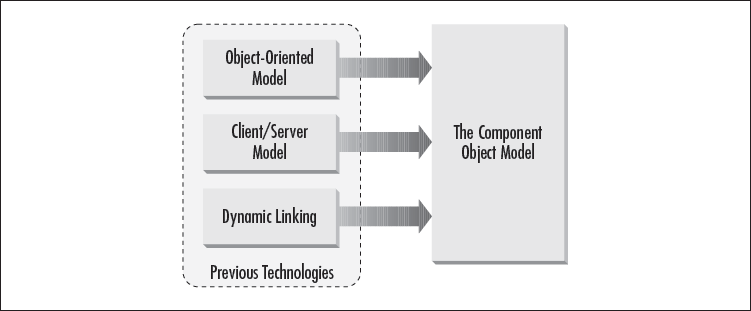COM
As its name implies, the Component Object Model is a model that you can utilize to build software components. As stated in Chapter 1, a component is a package or a module, more often referred to as an executable (EXE) or a dynamic linked library (DLL). Being a model, COM is fully specified in a formal document called the “The Component Object Model Specification.” This document specifies a binary standard that allows heterogeneous components to seamlessly interoperate with one another. COM is referred to as a binary standard, because it allows one component to reuse another component without the need of the second component’s source code. In addition to being a binary standard, COM specifies a number of rules and requirements to build software components. However, being just a specification, it doesn’t enforce the use a specific language, tool, or operating system to create component software.

Figure 2-1. Previous technologies used by COM
As exhibited in Figure 2-1, the COM specification encompasses several previously successful technologies. One technology that COM takes advantage of is dynamic linking. Dynamic linked libraries (DLLs) have been successful, for the most part, because they save space, support upgrades, and allow a runtime selection of functions needed by a client program. The other two important technologies, which deserve a more detailed discussion, include the ...
Get Learning DCOM now with the O’Reilly learning platform.
O’Reilly members experience books, live events, courses curated by job role, and more from O’Reilly and nearly 200 top publishers.

